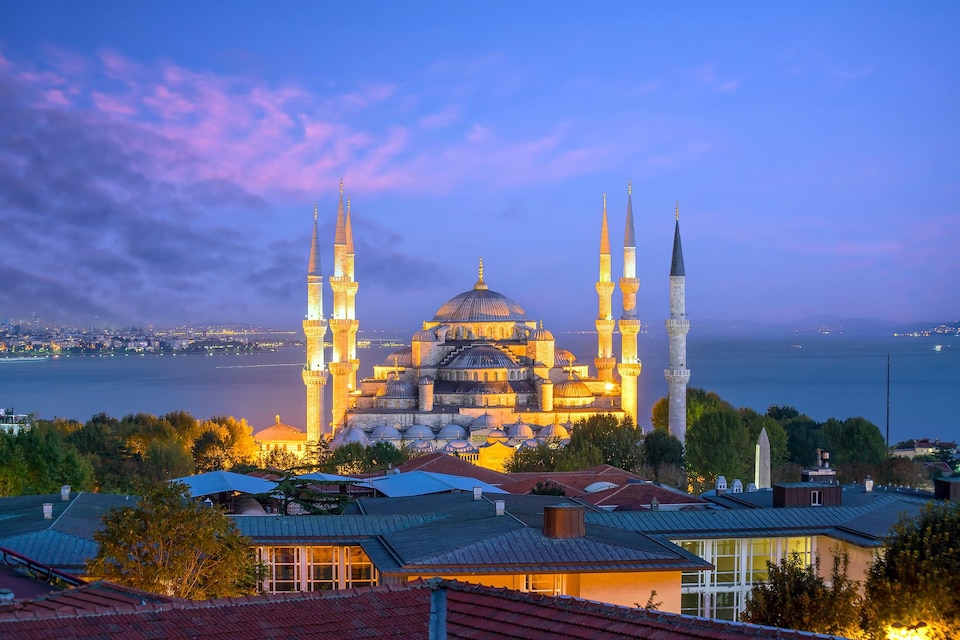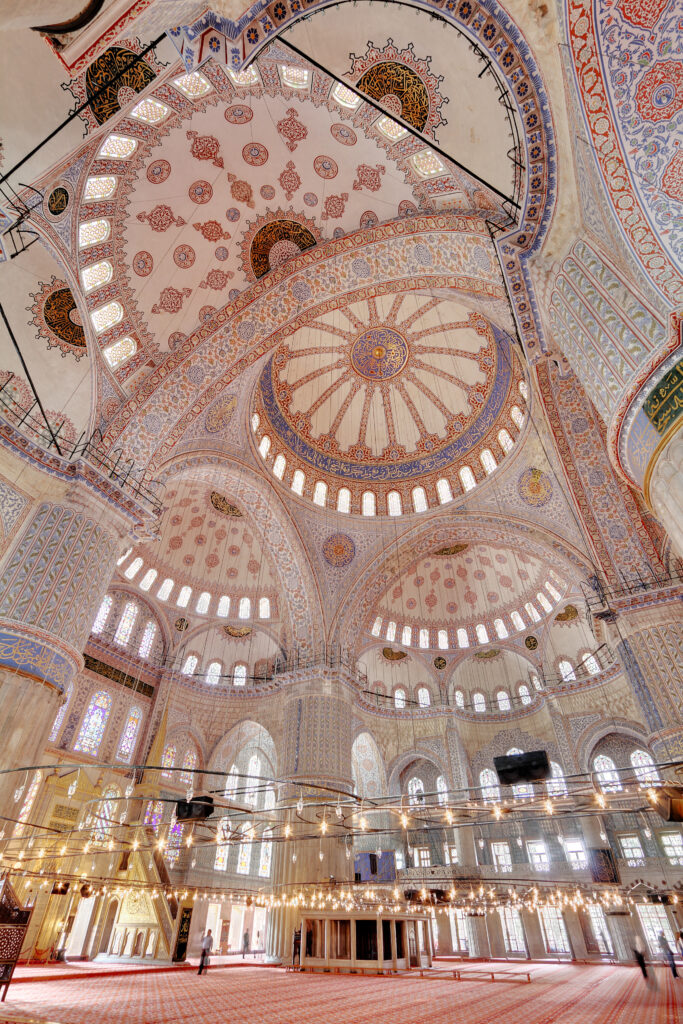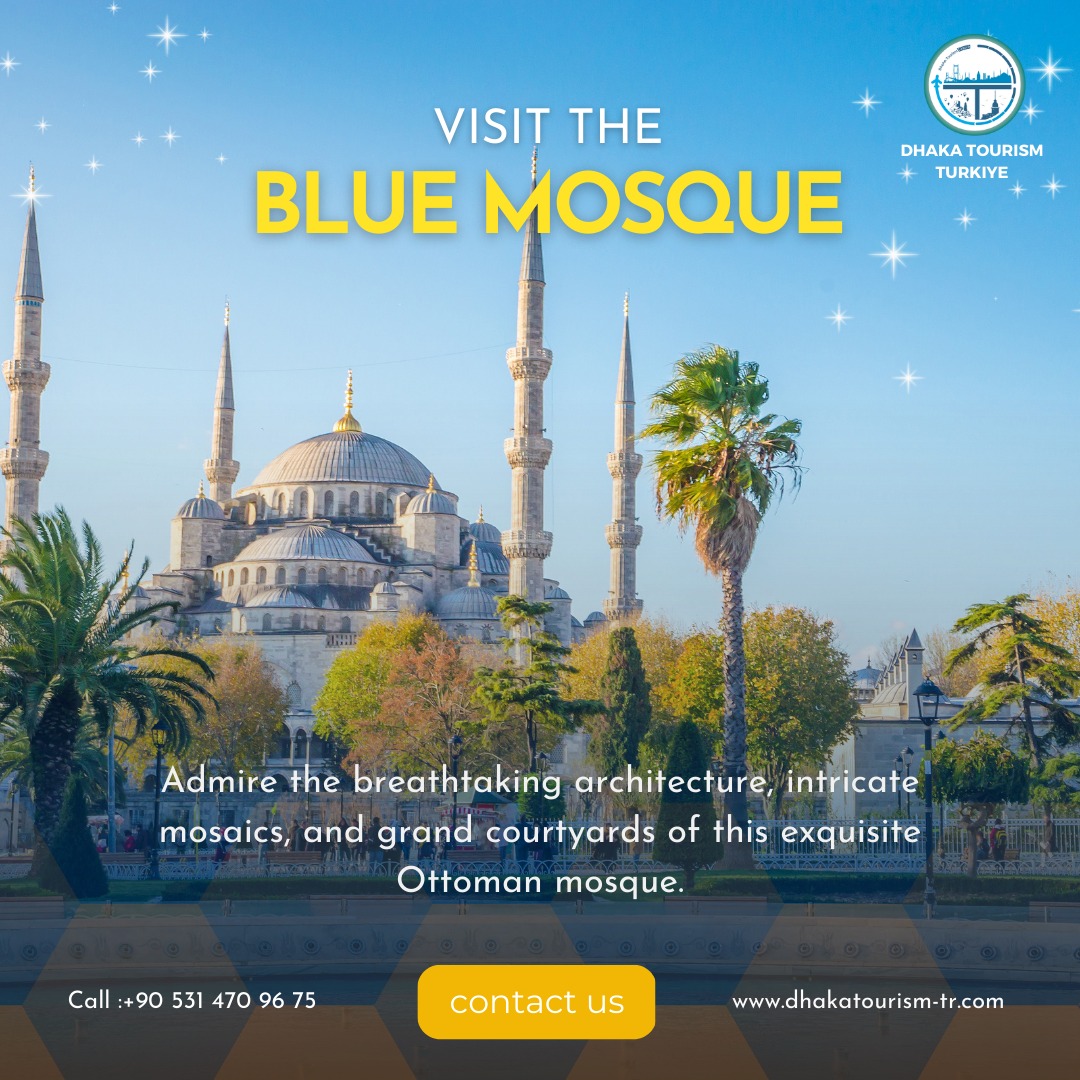Istanbul, the enchanting city that straddles Europe and Asia, is home to numerous architectural gems that showcase its rich history and cultural diversity. Among these masterpieces stands the iconic Blue Mosque, also known as Sultan Ahmed Mosque, a symbol of the city’s past grandeur and a timeless testimony to its architectural brilliance.

Historical Background
Commissioned by Sultan Ahmed I in the early 17th century, the Blue Mosque was constructed between 1609 and 1616, during the peak of the Ottoman Empire’s power. The Blue Mosque’s construction served both as a place of worship and a powerful symbol of imperial power and religious devotion.
Architectural Brilliance
The Blue Mosque’s architectural design reflects a harmonious blend of Islamic, Byzantine, and Ottoman architectural elements. The mosque was designed by the renowned architect Mehmet Aga, a student of the great Ottoman architect Mimar Sinan. It boasts an impressive array of domes, semidomes, minarets, and intricate tilework, all contributing to its grandeur.

The central dome, which measures approximately 23.5 meters in diameter and 43 meters in height, dominates the mosque’s skyline. It is flanked by six smaller domes and eight secondary domes, creating a visually stunning effect. The cascading domes are not only architecturally impressive but also symbolize the vastness and unity of the Islamic faith.

The Blue Tiles
One of the most striking features of the mosque’s interior is the abundance of blue tiles adorning the walls, giving the mosque its popular name, the Blue Mosque. More than 20,000 handcrafted ceramic tiles, in shades of blue, green, and turquoise, create intricate floral patterns, geometric designs, and calligraphic inscriptions. These tiles not only serve as decorative elements but also have acoustic properties, contributing to the mosque’s tranquil atmosphere.

Cultural and Spiritual Significance
Beyond its architectural grandeur, the Blue Mosque holds immense cultural and spiritual significance for the people of Istanbul and visitors alike. As an active mosque, it continues to be a place of worship, accommodating thousands of Muslims during prayer times. The mosque’s vast courtyard, ablution fountains, and inviting atmosphere provide a peaceful and spiritual sanctuary for those who seek solace and connection with the divine.

Embracing Diversity and Unity
The Blue Mosque is not only a religious landmark for Muslims but also a symbol of unity and inclusivity. It welcomes people from all walks of life, regardless of their faith, to appreciate its beauty and heritage. Visitors are encouraged to explore the mosque’s architecture, learn about Islamic traditions, and engage with the local community.

Tips for Visitors
If you plan to visit the Blue Mosque, remember to dress modestly, as it is an active place of worship. Women should cover their heads, shoulders, and legs, while men should avoid wearing shorts. Upon entering the mosque, you’ll be provided with a plastic bag to store your shoes, as it is customary to remove footwear before stepping on the mosque’s carpeted area.
Let us make your dream vacation a reality in Turkey. Contact us on Facebook, WhatsApp, and stay connected on LinkedIn, Instagram, Twitter for updates.
Explore our travel packages and destinations. Let us create unforgettable memories together!










